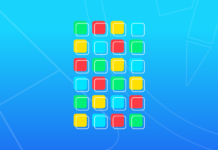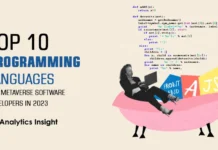Top 10 Metaverse Languages for Programming
Using augmented and virtual reality technologies, Metaverse is a network of 3D virtual worlds that creates immersive virtual experiences with a focus on social connection. The fledgling but quickly expanding sector’s global market value is anticipated to reach $716.5 billion by 2027. It goes without saying that the metaverse industry is experiencing significant investment, which is generating new opportunities for talented individuals, particularly programmers as well as other software developers. Whether you’re coding for augmented reality (AR), virtual reality (VR), or blockchain/cryptocurrency, you’ll need to be proficient in a variety of programming and development languages if you want to contribute to the establishment of the Metaverse.
- There is the programming language Solidity, which was developed specifically for and by the Ethereum network. If you want to start writing in the blockchain industry, you’ll need to master this additional programming language. By becoming proficient in Solidity, you’ll gain access to a market where investors support Ethereum development teams and make substantial investments.
- Being established in 2000, C# is a seasoned veteran of the industry and the workhorse of software development. Inexperienced or aspiring programmers are often drawn to newer coding languages, however, including a C family language in your tech stack can have a big influence. It is, in particular, if you wish to start programming for virtual reality platforms and the metaverse in general.
- Of course, C++ is a further significant gaming programming language. This is the primary language of the Unreal Engine, highlighting how important it is for aspiring developers to have C++ on their resumes. As gaming companies are anticipated to be at the forefront of the metaverse’s development, C++ becomes more and more important for game creators and large studios. However, one of the main back-end languages utilized by massive systems like Facebook is C++.
- JavaScript is the preferred programming language for contemporary web-based AR and VR applications. When developing a blockchain-based digital product or directly coding for novel metaverse experiences like virtual reality gaming, JavaScript is a wise choice.
- HTML is a popular technology for creating cross-platform and cross-browser applications and games, according to game creators. Additionally, it can be utilized with JavaScript. Because it is easy to learn and doesn’t require a profound understanding of algorithms, HTML is a preferred programming language among game developers.
- Python’s open-source nature can be a double-edged sword because of the inherent security flaws that come with a free-to-use computer language. However, Python is a requirement for modern programmers, especially for those who want to develop virtual reality applications. Applications for augmented reality can also be made using it.
- One of the most widely used programming languages for developing desktop games is CUDA-C. CUDA-C cores improve the realism of your game when it comes to gaming by displaying sharp images that have a powerful 3D impression.
- Rust is one of the languages on your resume that will be most beneficial because it gives you the resources you need to develop blockchain-specific solutions in the metaverse. If you utilize Rust in your stack, you should anticipate standing out to blockchain development teams and companies funding blockchain innovation.
- It is a lightweight, cross-platform scripting language that is becoming more and more well-liked in the video game business. Due to its straightforward syntax, it has grown to be one of the most widely used programming languages for video games. All major game engines employ Lua as their primary programming language, including Gideros mobile, Corona SDK, and CryEngine. Age of Conan, American Girl, Angry Birds, and Aquaria are a few of the top Lua games.
- The newest generation of cascading stylesheets, CSS3, allows you much more control over the appearance of your website. They make a lot of sense because HTML5 and CSS3 collaborate to produce the final rendered page. While CSS is only responsible for styling, JavaScript is in charge of templating and dynamic elements.

























































